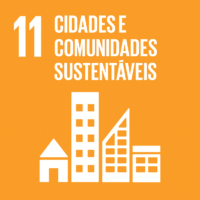Ciência_Iscte
Publicações
Descrição Detalhada da Publicação
Timber-framing construction in Herculaneum archaeological site: characterisation and main reasons for its diffusion
Título Revista
International Journal of Architectural Heritage
Ano (publicação definitiva)
2021
Língua
Inglês
País
Estados Unidos da América
Mais Informação
--
Web of Science®
Scopus
Google Scholar
Esta publicação não está indexada no Overton
Abstract/Resumo
Timber-framing is the most common mixed construction technique utilised by Romans and many
other builders throughout history. However, archaeological evidence is scarce due to the overlapping
urban land use and the perishability of the wooden skeleton.
This paper focuses on timber frame wall — opus craticium — from Herculaneum, examined
through a literature review and on-site analysis.
The aim of this research is shedding light on the reasons for the diffusion of opus craticium
through a critical analysis of Vesuvian archaeological evidence, among which the best-known is
Casa a Graticcio (Insula III, 13–15, Herculaneum). The dichotomy between the written transmission
of this technique and the construction practice in the Augustan epoch is also discussed.
It is shown how the pervasiveness of this technique in Herculaneum arises from multiple
reasons: firstly, the strong demand of new constructions and the need of heavy repairs during the
Augustan Principate. Additionally, the anaerobic conditions resulting from the specific on-site
burial in 79 AD allowed the conservation of the timber-framing.
Agradecimentos/Acknowledgements
--
Palavras-chave
Classificação Fields of Science and Technology
- Engenharia Civil - Engenharia e Tecnologia
- Artes - Humanidades
- Outras Humanidades - Humanidades
Contribuições para os Objetivos do Desenvolvimento Sustentável das Nações Unidas
Com o objetivo de aumentar a investigação direcionada para o cumprimento dos Objetivos do Desenvolvimento Sustentável para 2030 das Nações Unidas, é disponibilizada no Ciência_Iscte a possibilidade de associação, quando aplicável, dos artigos científicos aos Objetivos do Desenvolvimento Sustentável. Estes são os Objetivos do Desenvolvimento Sustentável identificados pelo(s) autor(es) para esta publicação. Para uma informação detalhada dos Objetivos do Desenvolvimento Sustentável, clique aqui.

 English
English


